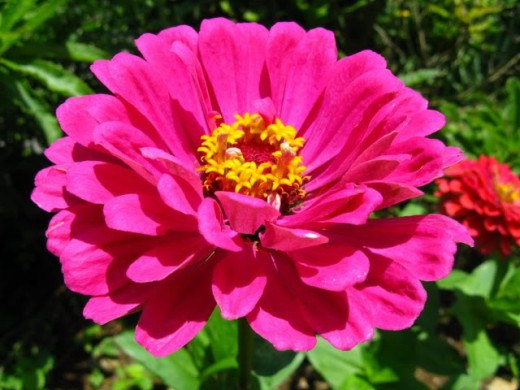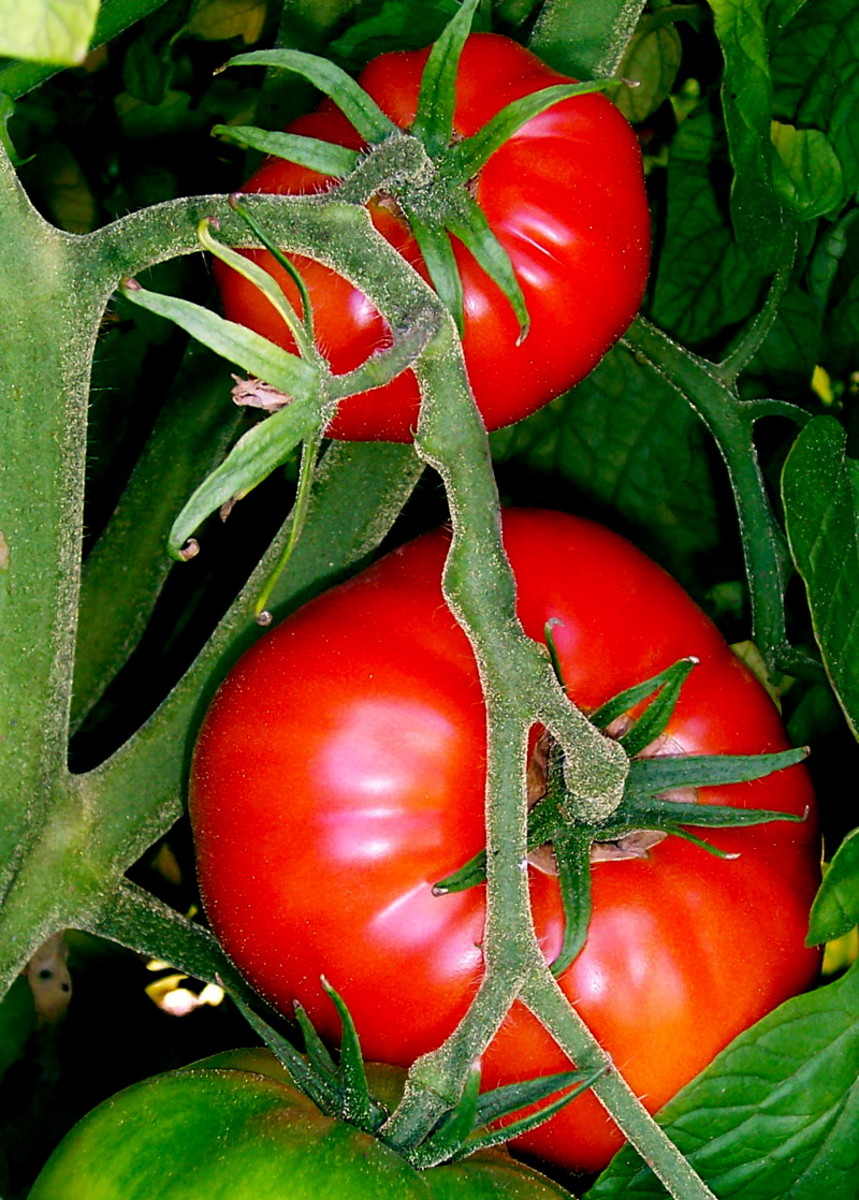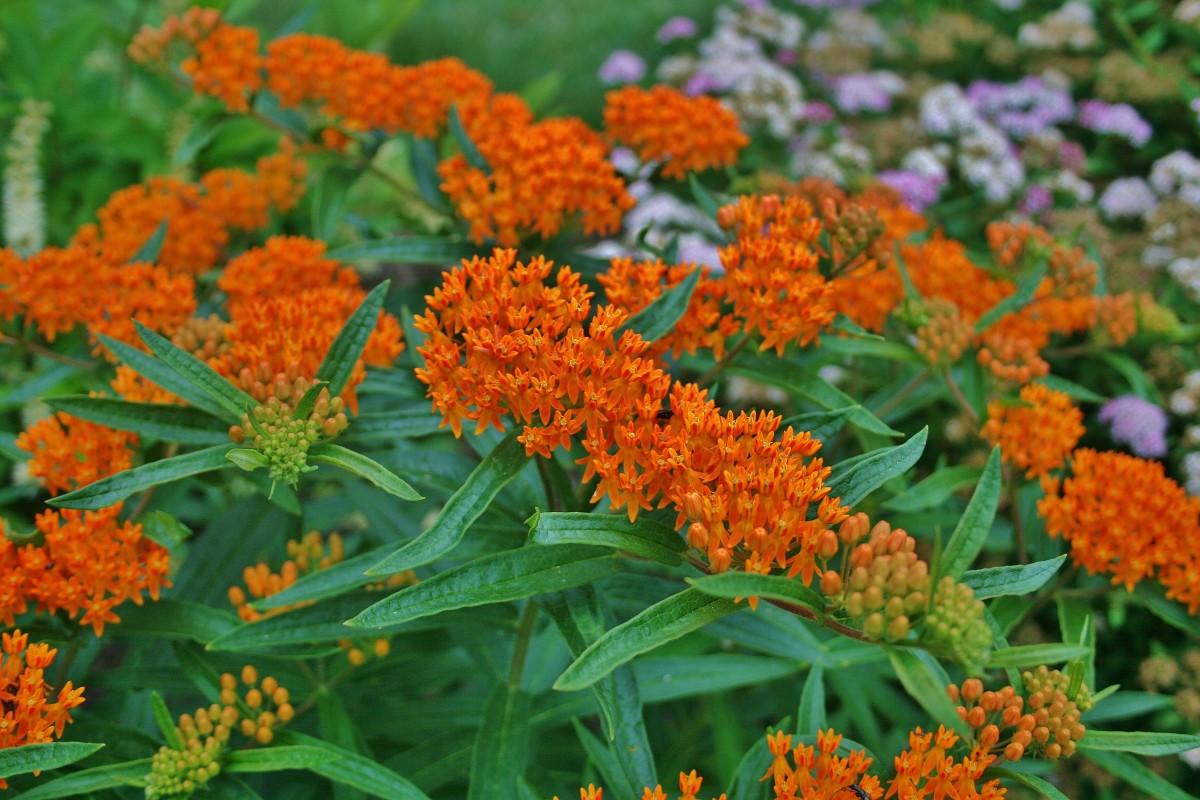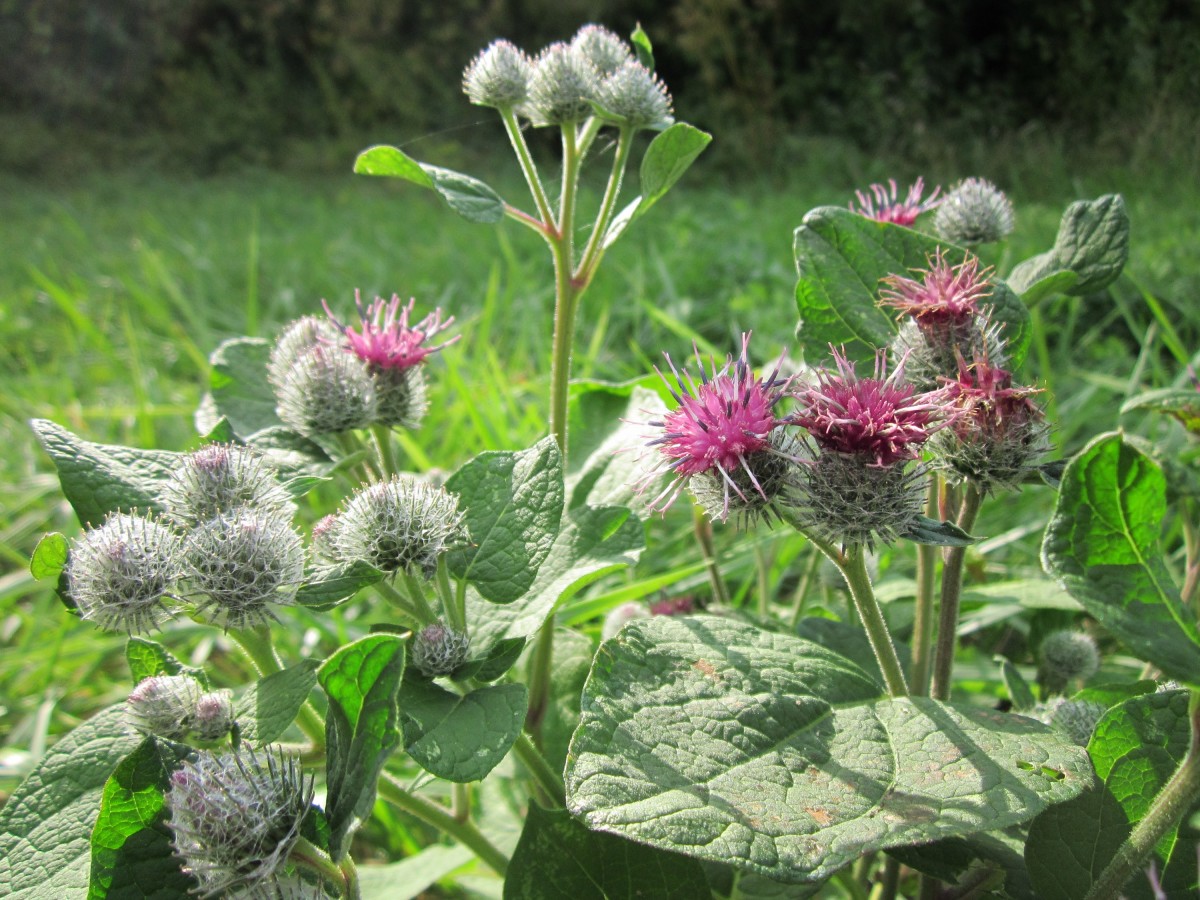How to Grow Beautiful Zinnia Flowers
What is a Zinnia?
Zinnia is formally a member of Asteraceae family, or as most of us call it: the Aster family.
They come in all different sizes, and can grow from about half a foot high to over three feet high, depending on the variety you choose.
As for color, aside from blue, you can just about get any color you want with a zinnia, including multiple colored flowers.
Add that to the amazing variety of the types of petals that zinnias have, and you have amazing choices, and ultimately display, that can be incorporated into your landscaping design.
For example, along with singles and doubles, you also have the choice of ruffles and beehives, among others, to work with. That offers an array of options that is a lot of fun and satisfying when trying to complete the garden design you hope to have.

Zinnia Petals
As mentioned, the petals of a zinnia come in a variety of numbers and shapes and sizes.
But also important, when planning how to place them in the garden, along with the height of the flower, is the width of the petals themselves.
Zinnias can have a petal width from about an inch, all the way up to as wide as seven inches. That needs to be considered when deciding where and how to place your flowers.
So think of the height of the zinnia, the color or colors of the flowers, and finally the width of the petals of the flower when making landscaping and placement decisions.
It's all of this that makes it so enjoyable to work with zinnias.
Growing Flower Tips
- How to Grow Beautiful, Colorful, Fragrant Climbing Roses
If there's an empty spot in your landscaping scheme that needs to be filled, a fence that needs something to be added to, or a wall somewhere that looks too bare, a climbing rose could be just the thing to get things looking right in your yard. ... - How to Grow Bougainvillea
Bougainvillea is a gorgeous ornamental plant that is particularly suited for warmer climates, although many people in colder climates choose to grow them in containers. It is also called paper plant or paper flower. When taking into account the... - How to Grow Alstroemeria or Peruvian Lily
The alstroemeria is a hardy perennial plant goes by a number of names, of which the most popular are Peruvian lily or lily of the Incas. Peruvian Lilies are among the more exotically beautiful flowers, and make great cuttings; but they also stand... - How to Grow Jasmine Flowers
When it comes to fragrance, few flowers can surpass the extraordinary scent emanating from the jasmine flower, which is a member of the olive family. The attractive fragrance is so strong that one mature jasmine plant could permeate an entire yard...
Differences of Zinnia Flower Petals
There are a number of different types of flowers or flower petals accompanying the zinnia family, including single-flowered, double-flowered, beehive, button, cactus and dahlia, among others. Some people may even call them different names depending on where they live and what they look like to them. They'll be described below to make up for any confusion in that regard.
As the name implies, the single-flowered zinnia include only one row of petals, which allows for he center of the flower to be seen.
For the double-flowered zinnia, there are numerous rows of petals that disallows for the center to be seen, and there are also a variety of shapes.
Beehive zinnias are named that for the simple reason they are considered to resemble an actual beehive. They include a number of rows of flat petals on smaller blooms.
The difference between a beehive zinnia and a button type is the flatness of the flower, which the button lays down more than the beehive does, giving it a flatter appearance.
Next is what is called cactus, which is identified as such because of the flowers are given that appearance from the way the edges of the petals roll under, bend and twist.
Finally are the dahlia zinnias, which most of us would recognize from their larger, flat petals which can be very wide. These types are normally semi-double, which means there are numerous rows of petals, but you're still able to see the center of the flower. Many people choose to use these for cut flowers because they display so great.
Starting Zinnias from Seed Indoors
Zinnias grow fairly fast from seed, so when thinking of when to sow them indoors, plan on about four to six weeks before the last frost date as a rule of thumb.
Depending on how many zinnias you plan on growing, sow them in a flat, shallow container, or in individual pots, and moisten the mix, but allow it to drain before sowing seeds.
When sowing many seeds in a flat container, it's easiest to plant them in rows so when they're ready to transplant the separation process will be fairly easy for you.
If you're using individual pots to sow your zinnia seed, place two or three seeds in each pot.
Whether in a flat container or pot, cover the sown seed with a light layer of mix and lightly spray the area to give the seeds a little moisture.
To help retain moisture in the beginning, cover the flats or pots with plastic or place them in a plastic bag. You want to retain that moisture in the potting mix during the germination process.
It usually takes about a week for the seeds to break ground. At that time remove the plastic and water from the bottom.
The ideal temperature at this time is from 75º - 80º F (24º-26º C). A heating mat gives you better control, but if that's not possible, place it on a warm surface and monitor the temperature of the mix.
Place the flat or pots in a location which is bright, or under grow lights. Seedlings will be ready to transplant when you have a couple of set of real leaves.
If you're growing taller zinnias, place them in a little deeper flats or pots because they are a little more temperamental when transplanting.
When they're ready, you can immediately transplant them if you're going to keep them as indoors plants in pots. If you're planting them outdoors, a good way to know if it's the right time is to take into account when you would plant your peppers or impatiens. If your soil is warm enough for them, it'll be warm enough for your zinnias.
Sowing Zinnia Seed Outdoors
As long as danger of a frost has passed and the soil has warmed up to about 50º F, zinnia seed can be sown directly into the soil outdoors. The air temperature also needs to be similar, and even if frost dangers are over, they don't respond well to frigid temperatures.
Just like sowing zinnia seed in a flat, sowing them in the garden is easiest done in rows; although groupings will work as well if you have a specific landscaping plan in mind, which hopefully you do.
Zinnia seeds come in different sizes, so the smaller seeds should be covered with about a 1/4 inch of soil, while the larger seeds with closer to 1/2 inch of soil.
Sow Extra Seeds
Because germination rates aren't always predictable, always sow a little more seed than you need in order to give you the option of thinning them out later.
If you're a little squeamish about snipping off the plants, you can always transplant them to another area of your yard, garden, or pot. Keep the ground where you sowed the seeds moist until the seed germinate.
The time to thin the plants is when they have two sets of leaves. You can simply snip the plants you don't want at ground level if you have no other plans or uses for them.
Zinnias Take Heat Well
Zinnias are native to Mexico and the American southwest, so they can be placed in full sun. They need a minimum of six hours a day of full sun to perform best. In really hot climates, having a little shade in the hottest time of the day will help zinnias survive and perform better.
They also do well in average soil, so if you're ground isn't that great, they should still do very well.
More Flower Growing Tips
- How to Grow Extraordinary Petunias Throughout the Summer
For those who love to have beautiful and colorful homes and gardens throughout the summer, one of the easiest and most productive ways to do that is to plant petunias. There is no great amount of knowledge to have to be successful, and the... - Gentian Growing Tips
While the gentian comes in a variety of annual and perennial species (with a few biennials), most people in the West know them as a dark blue flower, although the fringed gentian is gaining in popularity as well. Gentians grow in just about every... - Growing a Healthy Gardenia: Outdoors or Indoors
A gardenia, which is also known by the names Cape Jasmine, Gardenia jasminoides or Common Gardenia, is a flowering, evergreen shrub. Even though they are one of the harder flowering plants to grow, that doesn't stop people from trying over and... - How to Grow Rose of Sharon
Among my favorite of flowering plants or shrubs is the Rose of Sharon. There are few things to me more beautiful than when this outstanding flower producer shows off its blooms in the latter part of the summer. Being part of the hibiscus (Hibiscus...
Transplanting Zinnias
When zinnias are ready for transplanting, the best day to do it is when it is cloudy outside.
If that's not happening when you want to put them in the ground, transplant later in the afternoon or early evening so the young plants don't stress out from battling the drying effects of the sun.
That gives them a chance to settle for about half a day before the hot sun hits them the next day.
Zinnia Maintenance
Deadheading
Zinnias are hardy and don't need a lot of watering. But the one area they do require some maintenance is in regard to deadheading.
The reason why is even though zinnia plants can bloom for weeks, if you don't deadhead them on a consistent basis, the number of blooms will be lower, and the plant won't last as long, declining fairly quickly once the process begins.
Deadheading on a regular basis helps keep the plant looking great, as well as lengthen its lifespan.
Preventing Mildew and Fungus
To prevent any type of potential mildew problems, the answer for that is how you space them in the garden. Make them far enough apart to allow some air to circulate so they can dry out. Watering from the bottom is also a milder preventative because the leaves and most of the stems won't be touched by water.
Pinch Off Tops
For a fuller look, when the plants reach from about 4" to 6" high, pinch them off some to encourage them to bush out.
Fertilizer
Zinnias don't require a lot of nutrients to survive or thrive, so usually a couple of feedings during the growing season is ample to provide for the needs of the plant.
How to Deadhead Zinnias- Video
Best Zinnia Planting Strategy
Even if you are faithful in your deadheading, zinnias will decline over time, and that means there should be a planting strategy in place if you want them blooming for the entire season outside, or have consistent color inside.
There is a very simple and easy solution to this potential problem, and that is to always have a flat or group of seedlings in pots to use when the occasion arises.
A number of gardeners do just that, as once a zinnia declines, it starts to look pretty pathetic, and there's nothing to do but pull it out and replace it with another.
Some people struggle here if there is a little bit of a bloom left, even it it looks weak and anemic. But if you want your garden to look great and robust, be willing to get rid of the flower and replace it with another.
Keep in mind that zinnias will turn an unsightly brown when they start to die, making your garden or yard look unseemly.
As mentioned, once you've put in your original batch of zinnias in the ground, it would be a good idea to start up some replacements in a flat or pot to have them ready to keep your garden going all season.
Tips for Growing Flowers
- Growing and Caring for Aster Flowers
Even though asters are part of the sunflower family, many gardeners believe they're part of the daisy family because of the close resemblance the flowers have to them. Asters come in perennial and annual varieties. The perennial varieties, as a... - How to Grow Periwinkle or Vinca Plants
In this article we'll talk about periwhinkle, or vinca major and minor, which are also known as blue buttons, dwarf periwinkle, wintergreen, ground ivy, creeping vinca, death's flower, myrtle or creeping myrtle, among others. The myrtle... - How to Grow a Peony
Peonies are beautiful herbaceous perennial plants which can grow anywhere from about a 18 inches tall to 5 feet tall. Those that are identified as "tree" peonies grow from 5 feet tall up to 10 feet tall. What is very appealing about - Growing Tips for Calla Lilies
The calla lily, which is also known as Lily of the Nile, Zantedeschia, Easter lily or Arum lily, is a beautiful plant known for its trumpet-like or funnel-shaped leaves. Most people think of the gorgeous leaves as the flower, but the leaves...
Plant Placement
When making plans on the design of your garden and landscaping as it relates to zinnias, make sure you know the height potential of the zinnias you're planting, as it could have a tremendous impact on your garden and landscaping as they begin to grow.
Some people forget the disparity in height between the varieties of zinnias, and have planted them thinking they would be uniform in looks, when in fact they are all over the place in how tall they grow.
Usually you should have the tallest in the back if you're growing them against a house or garage, ending with the shortest in front.
The rest depends on how you're planting them and what types of landscaping plans you're using, such as planting around stumps or some other prop you're using for aesthetic reasons.
Growing Zinnias for Cut Flowers
Earlier it was mentioned to pinch off the top of the plant when it reaches about 4" to 6" high to achieve the fuller look.
That's great for most circumstances, except when your goal is to use your zinnias, or some of them, for cut flowers.
In that case, don't pinch them off but let them continue on as they are so the desired long stems grow. Pinching them off will stop that from happening.
Of course be sure to choose the taller varieties when wanting to grow zinnia for cut flowers, and think of how you're going to offer them support before you use them, as they will droop over when they reach a certain height.
In other words, they have two purposes: to look great in the ground, and to eventually be used for some fantastic cut flowers. To be successful with both is to offer support in a way that isn't too obtrusive until they're ready for the vase.
Dry Flower Arrangements
If you want to use your zinnias for dried flower arrangements, wait until the plants dry off from the morning dew before cutting them.
Once cut, dry them in a desiccant such as silica gel. It takes close to a week or so for them to dry.
From there you just put them into whatever type of arrangement you desire. Be aware that you can wire them together if you want to form a grouping of dried zinnias.
Cut Zinnias and Longevity
One fantastic benefit of using zinnias for cut flowers is they will come back again if you do it right.
What you do is cut the flower off the stem above a set of leaves. Not too long afterwards a couple of new stems with budding flowers will start to grow where you cut.
Bees and Butterflies
One of the great benefits of zinnias is the attraction they are to butterflies and bees, who love them.
Butterflies especially gravitate toward zinnias, and they will swarm your garden and yard to interact with the plants.
Bees are also a welcome visitor. If you have vegetables or other things your grow, they will help in the pollination process to boost the productivity. Zinnias, along with other flowers, help to boost their numbers as well.
Profusion Zinnias - Attracting Butterflies Painted Lady to Your Garden
Zinnias a Terrific Flower Choice
We've barely touched on the number of uses and ways to incorporate them into your landscaping designs, but as you can see from the wide variety of color, petals, widths and heights of the flowers, you can use them in an almost infinite variety of ways in your garden or yard.
The hardiness of the plants and relatively easy maintenance associated with them makes them a perfect choice for those who want great color with not too much care, or for those who really enjoy interacting with their flowers to make them look even better.
Either way, growing zinnias offers compelling choices no matter what your preferences are.





